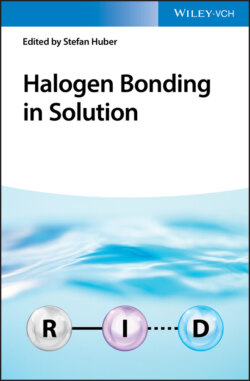Читать книгу Halogen Bonding in Solution - Группа авторов - Страница 21
1.3.1 CSD Evaluations
ОглавлениеPossibly, the first CSD evaluation of what we now understand to be the halogen bond was in 1979 where the geometry of the C–I⋯O interaction was evaluated [66]. Murray‐Rust and Motherwell noted an anisotropic distribution of contact distances as a function of C–I⋯O angle, where shorter contacts (and less variability) were observed for near linear (C–I⋯O ∠ ≈180°) contacts. The trend, although less pronounced, was also observed with Br and Cl species, which we now attribute to their weaker halogen bond donor ability. This initial study pulling from 20 000 structures was revisited again seven years later where the database had grown to 40 000 structures [4]. Here, Ramasubbu, Parthasarathy, and Murray‐Rust evaluated halocarbons (C–X (X = Cl, Br, I)) and their contacts with metals, Lewis bases (nitrogen and oxygen species), and other halogens. The geometric characteristics of the “electrophile–nucleophile pairing(s)” showed that electrophilic metals favor a “side‐on” approach to halogens, nucleophiles exhibited a “head‐on” approach, and other halogens can participate as either the nucleophile (head‐on) or the electrophile (side‐on). These early CSD studies and others [67-69] reinforced the trends previously observed by Bent and Hassel, but observations from larger data sets provided more convincing conclusions.
Elaborating on halogen–halogen contacts, Parthasarathy and Desiraju established a classification scheme that is still used today [68]. The two contacts, type I and type II, are influenced by the anisotropic electron density and polarizability of halogens and have distinct geometrical conditions (Figure 1.6). The type II interaction is a true halogen bond – the electropositive portion of the halogen interacts with the electron‐rich site of another. Type I contacts are considered geometry‐based contacts that arise from close packing [62]. While not halogen bonds, the type I contacts have been designed into solid‐state structure and provide a convenient method of classification. The prefixes cis‐ and trans‐ have been recent additions to describe type I contacts, providing specificity of the arrangement of molecules in type I interactions [70]. A later report by Desiraju highlights a greater frequency of type II interactions following the donor atom species I > Br > Cl > F, further emphasizing that the type II contacts are true halogen bonds [62,69].
Figure 1.6 ChemDraw figure depicting the structural scheme for both type I (a) and type II (b) halogen⋯halogen contacts.
